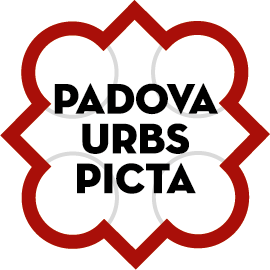The current complex of Villa Giusti consists of two distinct main buildings, represented by the villa itself and a large structure that encompassed the service dependencies (porter’s lodge, stables) and agricultural ones (granary and workshops). There is also a tower dating back to at least the 13th century, heavily restored in the Romantic period, a charming jardin d’hiver in late 19th-century style, and various smaller greenhouses.
The current appearance and structure of the complex are linked to a global restoration carried out in 1875, according to the then-dominant style that tended to conglomerate heterogeneous stylistic elements (including the two towers of distinctly Austrian style flanking the entrance).
The medieval origin of the complex is confirmed by the discovery on an internal wall of a Gothic window (now not visible), and by the powerful brick support columns still present in the cellar.
The villa is surrounded by a large park that extends over an area of about six hectares, personally designed by Count Gerolamo Giusti del Giardino.
Villa Giusti was chosen as the venue for the Armistice negotiations because it was a private house little known to the Austro-Hungarian intelligence services, because it was owned by a Senator of the Kingdom, and because Vittorio Emanuele III of Savoy, King of Italy, had resided there from November 1917 until January 1918, when his General Command was in the process of transferring from the center of Padua to Lispida at the foot of the Euganean Hills, in order to spare the civilian population of the city from the air raids that were already quite heavy at that time (a map of the numerous bombs dropped on Padua is displayed in the Armistice Room).
Previously, the King had used it for diplomatic and political meetings and to coordinate military efforts in his role as Supreme Commander.
